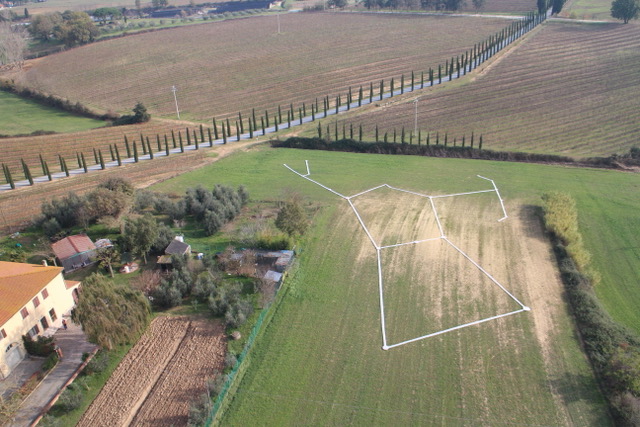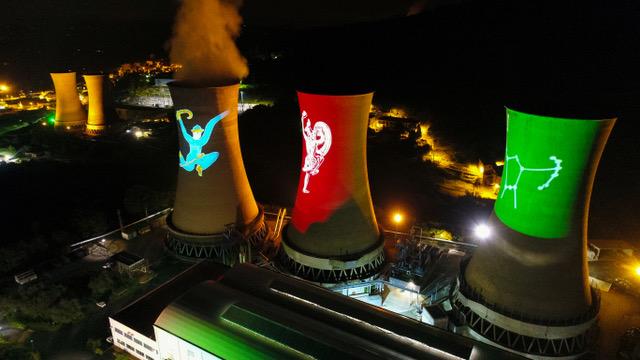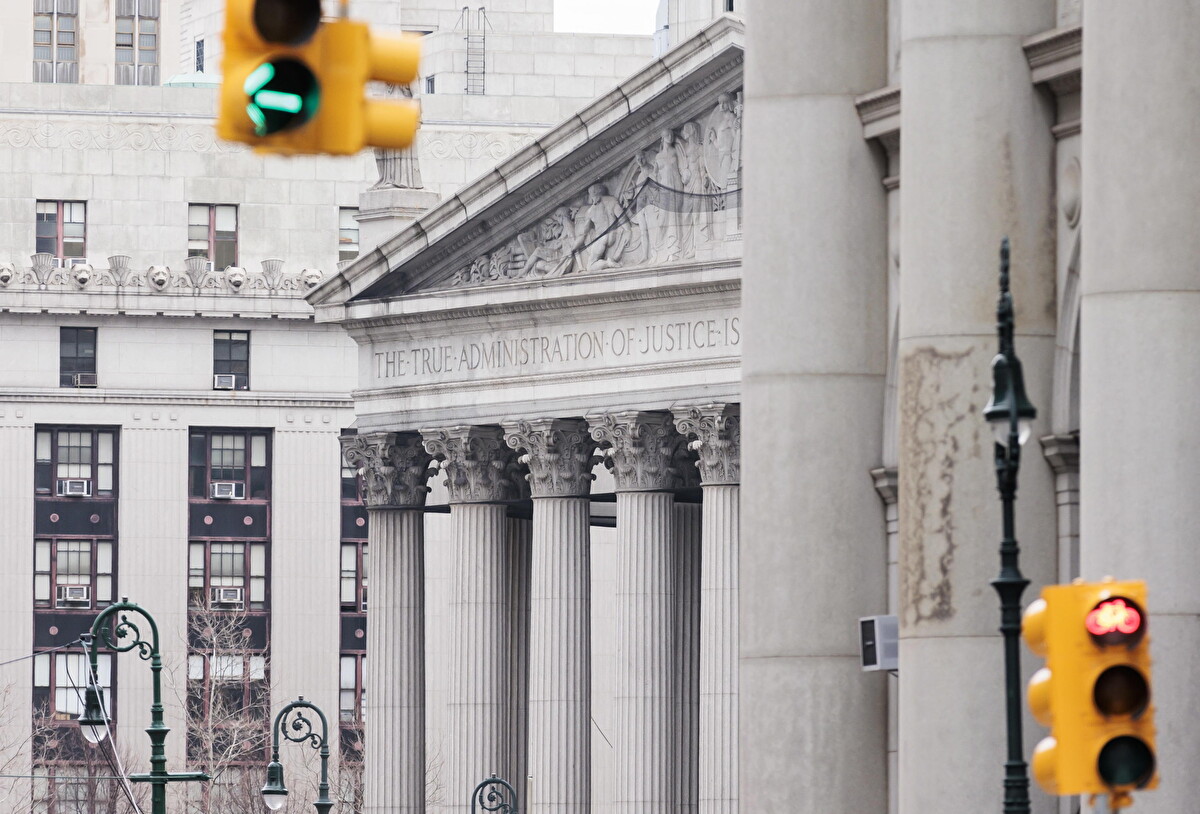Luca Serasini is an artist with his feet firmly planted on the ground. But he also soars over spaces and places with the momentum and speed of the Greek god Hermes:

he uses his two small wings to observe the land which gave birth to him, to which he is profoundly attached and which he never abandons, not even when he focuses on new visions or creates his artistic works. In these works, the link between heaven and earth is constantly asserted, often marked by the tempo of an intuition; constructed within an intricate project; delineated by the sign of a simple (Le Nuvole, [Clouds], 2020), and simultaneously evocative (Per Aspera ad Astra, 2020), image.
Indeed, with the momentum and speed of a Greek god, he investigates the world he inhabits and the one he yearns for. He observes planets and stars, steals constellations to project them onto pristine valleys. He telephones unknown satellites to listen to stories and legends of a time and a truth that once existed.

In the dusty ground of a bullfight ring in Valencia, he overpowers bulls with the vigor of a gladiator, only to be disheartened by the dismal awareness of the strongest prevailing over the weakest. He investigates the narcissism of a society that is increasingly social-media-obsessed and less relational, let alone human. He observes the worlds of the domineering, who have exchanged reason and sentiment for the most archaic bestiality in the conquest of a civilization in decline (Tori e Aquiloni [Bulls and Kites], 2015). He portrays with sensitivity and respect the worlds of the invisible, which are there for everyone to see – worlds, alas, that everyone regards as having no value or importance (Gli Invisibili [The Invisible Ones], 2015).
His style is not bound by any rules, since Serasini is an experimenter.

I am utterly seduced by his Land Art works, boundless rural oceans illuminated by constellations (Orione, il Grande Cacciatore [Orion, the Great Hunter], 2015, Pegaso,10 Storie, 10 Stelle [Pegasus, 10 Stories, 10 Stars], 2016, Come Iadi tra le Pleiadi [Like Hyades among the Pleiades], 2017), created on ephemeral beaches of distant, sun-drenched lands (Les Étoiles Binaire, Marocco, 2019), set to be erased by a wave that will not return–but also majestic and reassuring, in which geothermal cooling-towers (Costellazioni/Larderello [Constellations/Larderello], 2018) are transformed into “lighthouses” lit by symbolic images, projected onto imposing tubular walls, perhaps to represent the references, lost and then rediscovered, of archetypes and myths, which restore intensity, energy and certainty to the precarious balances of life we have created for ourselves. Or, perhaps, a necessary reconnection with the archè, which Serasini almost invariably finds in the stellar transposition of the self into that dimension.

“In past times, when everything needed to be controlled and defined, and constellations were identified by lines and points, there was pure dream, fantasy. Among the many representations of constellations available, I have selected three iconographies: those drawn by the Persian astronomer Al-Sufi (903-986), those illustrated by the Polish astronomer J. Hevelius (1611-1687) and the German astronomer J. Bayer (1572-1625), and those of our modern/contemporary era, as they have been represented since 1800. These illustrations are works of art in their own right. Redrawing them involves a process of appropriation, with the aim of slowly connecting to a past time”, Serasini explains.

Themes, visions and technical-video-artistic-graphic reworkings originating in a careful examination of his own experience and the life that surrounds him, social and human phenomena viewed from a perspective that, starting out from personal curiosity and sensitivity, becomes, perhaps, an attempt to explore not only the scenarios the artist witnesses on a daily basis, but also the causes of a human condition adrift.

The artist’s strong commitment to the most important values, such as honesty, loyalty and authenticity, always clinging to an inextricable sense of reality, almost always shines through. Elements that we find in all the works that have shaped the history of the artist Luca Serasini, from Marina di Pisa, yet also Pisa, over the past decade.












